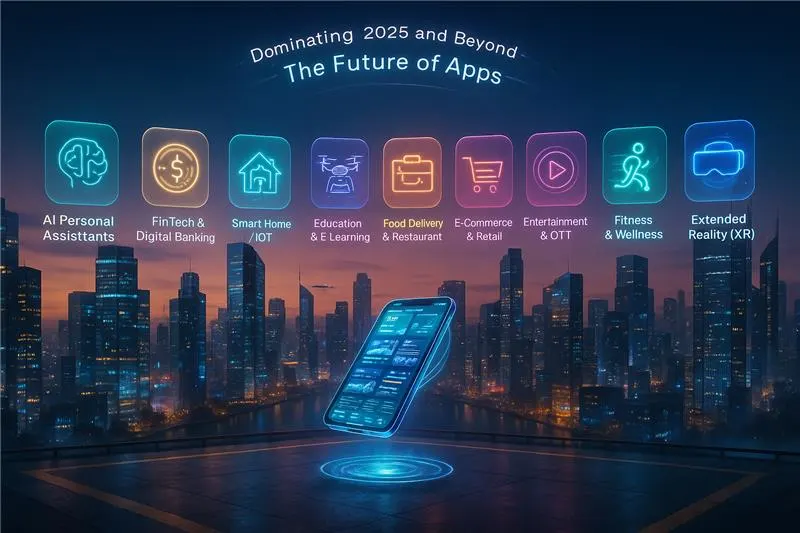
Beyond the Voice Assistant: Architecting a Truly Intelligent Home for Wellness, Productivity, and Sustainability
The term “smart home” often conjures images of telling a voice assistant to play a song or turn on the lights. While these are certainly features, they only scratch the surface of what a truly intelligent living space can be. A modern smart home is not merely a collection of disconnected gadgets; it’s a cohesive, integrated ecosystem designed to enhance nearly every facet of your daily life. It’s a responsive environment that can improve your work-life balance, bolster your health and wellness, increase your home’s efficiency, and provide unparalleled peace of mind. By moving beyond simple commands and embracing automation, data-driven insights, and thoughtful design, you can transform your house from a passive structure into an active partner in your life. This article will serve as a comprehensive guide to understanding, planning, and implementing a smart home that works for you, covering everything from the foundational technology to practical applications that can redefine your relationship with your living space.
The Core Components of a Modern Smart Home
To build a truly effective smart home, it’s essential to first understand its foundational elements. Just like a physical home requires a solid foundation, a smart home relies on a robust technological framework. This framework consists of hubs that act as the brain, communication protocols that serve as the language, and a clear purpose built on the pillars of automation, control, and insight.
Hubs and Controllers: The Brain of the Operation
At the center of most sophisticated smart homes is a hub or controller. This device acts as the central nervous system, allowing different devices from various manufacturers to communicate with each other. There are several approaches to this:
- Voice Assistant Hubs: Devices like the Amazon Echo, Google Nest Hub, and Apple HomePod are the most common entry points. They offer voice control and serve as a central point for connecting compatible devices, making them excellent for beginners.
- Dedicated Hubs: For more advanced users and greater reliability, dedicated hubs like those from Hubitat, SmartThings, or Aeotec are powerful options. They often support a wider range of communication protocols and allow for more complex, localized automations that can run even if your internet connection goes down.
- Software-Based Hubs: For the ultimate DIY projects enthusiast, software like Home Assistant, running on a small computer like a Raspberry Pi, offers unparalleled customization and control, integrating thousands of devices across countless brands.
Communication Protocols: The Language of Devices
For devices to work together, they must speak the same language, or have a translator. In the smart home world, these languages are communication protocols. The most common include:
- Wi-Fi: Ubiquitous and fast, Wi-Fi is great for devices that need a lot of bandwidth, like security cameras and smart speakers. However, having too many Wi-Fi devices can congest your home network and impact performance.
- Zigbee and Z-Wave: These are low-power mesh networks designed specifically for smart home devices. Each device can act as a repeater, extending the network’s range and reliability. They are ideal for sensors, smart locks, and light bulbs, as they don’t interfere with your Wi-Fi.
- Matter: A relatively new, open-source connectivity standard backed by major tech companies like Apple, Google, and Amazon. Matter aims to be the universal translator, making it simple to buy a device and know it will work with your existing ecosystem, regardless of the brand. This promises to solve many of the compatibility headaches that have plagued the industry.
The Three Pillars: Automation, Control, and Insight
A successful smart home is built on three key principles. Control is the most obvious—the ability to turn things on or off via an app or your voice. Automation is where the “smart” truly begins. This is the logic that allows your home to act on its own based on triggers, such as “If the front door unlocks between 5 PM and 7 PM, then turn on the entryway lights and set the thermostat to 70 degrees.” Finally, Insight involves using data from sensors to make better decisions. Your smart thermostat provides insight into your energy usage, helping you with financial planning and budget tips, while an air quality monitor provides insight into your home’s environment, impacting your family’s health and wellness.
Beyond Convenience: Integrating Smart Technology into Your Daily Life

The true value of a smart home is realized when it moves beyond novelty and becomes an integral part of your lifestyle, enhancing everything from your work to your well-being. By focusing on specific areas of your life, you can deploy technology that delivers tangible benefits.
The Productive and Healthy Home Office
With the rise of remote work, creating a functional and healthy workspace at home is crucial. Smart technology can transform any room into a high-performance office. Consider smart lighting that supports your circadian rhythm; it can be programmed to emit cool, blue-toned light during the day to boost focus and gradually shift to warmer tones in the afternoon to help you wind down. This simple change can have a profound impact on your productivity tips and mental health. Smart plugs can be used to create an “end of day” routine that powers down all non-essential electronics, preventing phantom power drain and contributing to a more sustainable living model. An automated “focus mode” can be triggered with a single command, which might lower smart blinds, silence notifications on smart displays, and play ambient sounds to minimize distractions, fostering a better work-life balance.
Enhancing Health, Wellness, and Sleep
Your home environment has a direct impact on your physical and mental well-being. A smart home can be a powerful ally in your pursuit of a healthier lifestyle. Smart air purifiers can monitor indoor air quality and automatically activate when pollutants like dust or VOCs are detected, contributing to holistic health. For better sleep health, create an automated “wind-down” routine an hour before bed. This could involve dimming all the lights in your home, adjusting the thermostat to an optimal sleeping temperature, and playing a meditation track through your smart speaker. Smart blinds can be set to slowly open with the sunrise, waking you naturally and gently, which is a far less jarring way to start the day and can help manage stress. These small, automated adjustments can lead to significant improvements in your overall wellness.
The Sustainable and Efficient Household
A smart home is an eco-friendly living powerhouse. The ability to monitor and automate energy consumption can drastically reduce your carbon footprint and your utility bills. A smart thermostat is the most common example, learning your schedule to heat or cool your home efficiently. But you can go further. Smart plugs with energy monitoring can identify which appliances are the biggest power hogs, providing data for better personal finance decisions. For those with a garden, smart irrigation systems use local weather data to water only when necessary, conserving water and promoting better plant care, whether you’re into urban gardening or have a larger outdoor living space.
Your Smart Home Blueprint: Best Practices and Common Pitfalls
Jumping into the world of smart home technology can be overwhelming. A strategic approach is key to building a system that is reliable, secure, and genuinely useful. Following best practices and being aware of common pitfalls will save you time, money, and frustration.
Step 1: Define Your “Why” and Start Small
The biggest mistake newcomers make is buying a box of assorted smart devices without a clear goal. Before you buy anything, ask yourself what problem you want to solve. Is your primary motivation home security? Do you want to save money on energy? Or are you looking for convenience to help with a busy family life? Start with a single-room or single-purpose solution. For example, if peace of mind is your goal, begin with a video doorbell and a smart lock. If you want to dip your toes into automation, start with smart bulbs in your living room. This focused approach allows you to learn the technology and expand thoughtfully over time.

Step 2: Choosing Your Ecosystem
Committing to a primary ecosystem—Amazon Alexa, Google Assistant, or Apple HomeKit—will create a more seamless experience.
- Amazon Alexa: Boasts the widest compatibility with third-party devices, making it incredibly versatile.
- Google Assistant: Leverages Google’s powerful AI for more natural language conversations and integrations with services like Google Calendar.
- Apple HomeKit: Prioritizes user privacy and security with a strict certification process and a focus on local device control, meaning many automations work without an internet connection.
When shopping, look for the “Works with…” logo for your chosen ecosystem. The growing adoption of the Matter standard will make this even easier in the future, but for now, sticking to one primary platform is the safest bet.
Common Pitfalls to Avoid
- Network Overload: Every Wi-Fi-connected device places a demand on your home network. If you plan to have dozens of smart devices, your standard internet router may struggle. Mitigate this by choosing Zigbee or Z-Wave devices where possible, as they operate on their own mesh network, or consider upgrading to a more robust mesh Wi-Fi system for your home.
- Compatibility Chaos: Buying devices from different ecosystems that can’t communicate with each other leads to a fragmented and frustrating experience. Plan ahead and check compatibility before you purchase.
- Ignoring Security: Every internet-connected device is a potential entry point for security threats. Secure your smart home by using strong, unique passwords for every device and account, enabling two-factor authentication, and regularly checking for and applying firmware updates. A secure smart home is fundamental to true home security.
The Next Generation: AI, Ambient Computing, and Proactive Assistance
The smart home is still evolving. The future lies in creating environments that are not just reactive to our commands, but proactive in anticipating our needs. This shift is being driven by advancements in artificial intelligence and the concept of ambient computing.
From Reactive to Proactive
Soon, you won’t need to create complex “if-then” routines. Your home will learn your patterns and act on your behalf. For example, by integrating with your calendar and GPS data, your home could detect that you’re heading home from the airport after a trip. It could then proactively adjust the thermostat to your preferred temperature, turn on the lights, and run a quick security check before you even walk in the door. This level of intelligence will make the technology feel truly seamless.

The Rise of Ambient Computing
The goal of ambient computing is to make technology disappear into the background. Instead of interacting with screens and apps, the home itself becomes the interface. Sensors embedded in walls, furniture, and appliances will work in concert to understand context and respond accordingly. You might walk into a room, and the lighting and music will adjust to a preset preference based on the time of day and who is in the room, with no voice command or button press required.
Integration with Health and Aging Well
The most profound impact may be in health and wellness, particularly for senior living. Non-intrusive sensors could monitor daily routines and detect anomalies, such as a fall or a prolonged period of inactivity, and automatically alert family members or emergency services. This technology will empower older adults to maintain their independence and age well in their own homes, providing invaluable peace of mind for them and their loved ones.
Conclusion: Your Home, Reimagined
A truly smart home is far more than a technological novelty; it’s a personalized environment designed to support and enhance your life. By starting with a clear purpose, choosing the right foundational technology, and thoughtfully integrating devices, you can create a home that boosts your productivity, improves your health and sleep, reduces your environmental impact, and provides robust security. The journey begins not with buying every gadget on the shelf, but with identifying your needs and strategically deploying technology to meet them. As the technology continues to evolve towards proactive, ambient intelligence, our homes will become even more intuitive partners, freeing us from mundane tasks and giving us back our most precious commodity: time to focus on what truly matters.
Archives
- December 2025
- November 2025
- October 2025
- September 2025
- August 2025
- October 2023
- September 2023
- August 2023
- July 2023
- June 2023
- May 2023
- April 2023
- March 2023
- February 2023
- January 2023
- December 2022
- November 2022
- October 2022
- September 2022
- August 2022
- June 2022
- May 2022
- April 2022
- March 2022
- January 2022
- December 2021
- November 2021
- October 2021
- August 2021
- November 2020
- July 2020
- May 2020
- April 2020
- March 2020
- August 2018
- July 2018
- June 2018
- April 2018
- March 2018
Categories
- Age Groups
- AI/ML
- Alternative Medicine
- Animal Health
- Animal Husbandry
- Animals
- Anti-Aging
- Architectural Design
- Auditory Science
- Augmented Reality
- Automation
- Babies
- Baby
- Beauty & Skincare
- Biohacking
- Biomechanics
- Book Reviews
- Breastfeeding
- Budgeting
- Business
- Cardiovascular Health
- Career Advice
- Career Development
- Career Growth
- Cats
- Chess
- Chronobeauty
- Circular Economy
- Cleaning Tips
- Cloud Computing
- Cognitive Health
- Cognitive Performance
- Cognitive Science
- Community
- Community Building
- Community Engagement
- Community Living
- Computer Vision
- Consumer Guides
- Consumer Trends
- Container Gardening
- Content Analysis
- Content Non-Technical
- Content Strategy
- Cosmetic Chemistry
- Cultural Events
- Cycling
- Data Analysis
- Data Engineering
- Data Science
- Design Psychology
- Developer Productivity
- Diet
- Diet
- Digital Identity
- Digital Media
- Digital Wellbeing
- DIY Projects
- Dogs
- Engineering Culture
- Entertainment News
- Environmental Impact
- Environmental Science
- Equity Compensation
- Exercise
- Exercise Science
- Exercise Technique
- Exotic Pets
- Fall Gardening
- Family
- Family Health
- Family Life
- Fashion Business
- Fashion Industry
- Fashion News
- Fashion Tech
- Financial Analysis
- Financial Planning
- Flooring Maintenance
- Food
- Food Psychology
- Food Safety
- Food Tech
- Functional Fitness
- Functional Training
- Future Of Work
- Garden Care
- Garden Maintenance
- Gardening Tips
- Greece
- Greek
- Greek Food
- Gymnastics
- Hardware Engineering
- Health
- Health And Wellness
- Health Informatics
- Health Science
- Health Tech
- Healthcare Management
- Healthy Eating
- Healthy Recipes
- Holistic Health
- Holistic Wellness
- Home & Living
- Home Decor
- Home Financing
- Home Health
- Home Improvement
- Home Organization
- Horticulture
- Identity Management
- Industrial Design
- Industry Analysis
- Infant Nutrition
- Infrastructure Management
- Ingredient Deep Dive
- Integrative Medicine
- Interior Design
- Internet of Things
- Internet of Things (IoT)
- Invalid Request
- Investment Strategies
- Investment Strategy
- IoT
- Kids
- Leadership Development
- Learning Strategies
- Lifestyle
- Lifestyle Brands
- Lifestyle News
- Lifestyle Optimization
- Literary Criticism
- Literature
- Logistics Management
- Material Science
- Materials Science
- Meal Planning
- Media Analysis
- Meditation
- Mental Health
- Mental Performance
- Mental Wellness
- Miami
- Miami Food
- Mind And Body
- Minimalism
- Mobile Development
- Neuroscience
- No Applicable Categories
- Nutrition
- Nutrition News
- Operating Systems
- Operational Resilience
- Opinion
- Organization Tips
- Outdoor Living
- Over 40
- Over 50
- Over 60
- Parenting
- Parenting
- Parenting Strategies
- Performance
- Personal Development
- Personal Finance
- Personal Growth
- Personal Productivity
- Pet Care
- Pet Safety
- Philosophy
- Politics
- Productivity
- Protein
- Psychology
- Psychology of Space
- Reading Culture
- Real Estate Investment
- Recipes
- Regulatory Compliance
- Remote Work
- Renovation Planning
- Resource Management
- Responsible Pet Ownership
- Retail Strategy
- Robotics
- Science
- Seafood
- Seasonal Gardening
- Security
- Self-Care
- Skincare Science
- Skincare Trends
- Sleep
- Sleep Health
- Smoothies
- Social Impact
- Soft Skills
- Soil Health
- Spatial Computing
- Spatial Design
- Stress Management
- Supplements
- Sustainability
- Sustainability Science
- Sustainable Engineering
- Sustainable Fashion
- Systems Engineering
- Tax Optimization
- Tax Strategy
- Travel
- Travel News
- Travel Safety
- Travel Tips
- Trend Analysis
- Uncategorized
- Urban Planning
- Veggie
- Virtual Events
- Volunteering
- Wealth Management
- Wearable Technology
- Wellness
- Wellness Technology
- Work-Life Balance
- Workplace Culture
- World
- Writing
- Writing Skills
- Yoga News
- Zero Waste




Leave a Reply